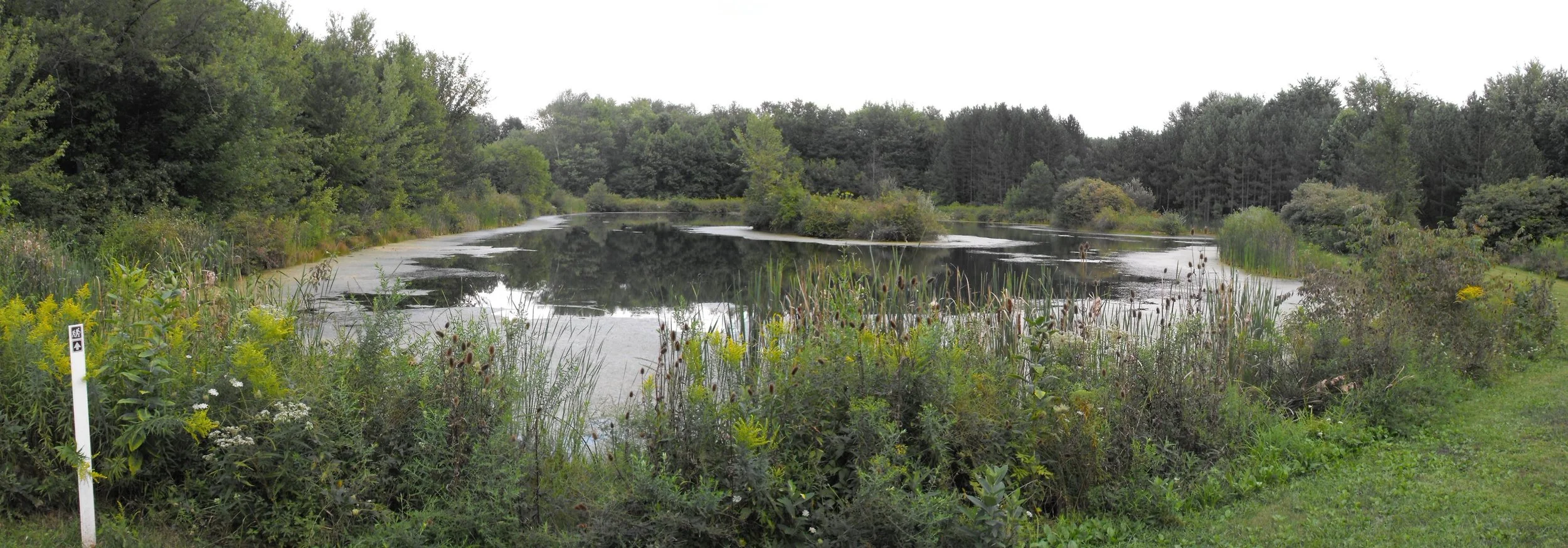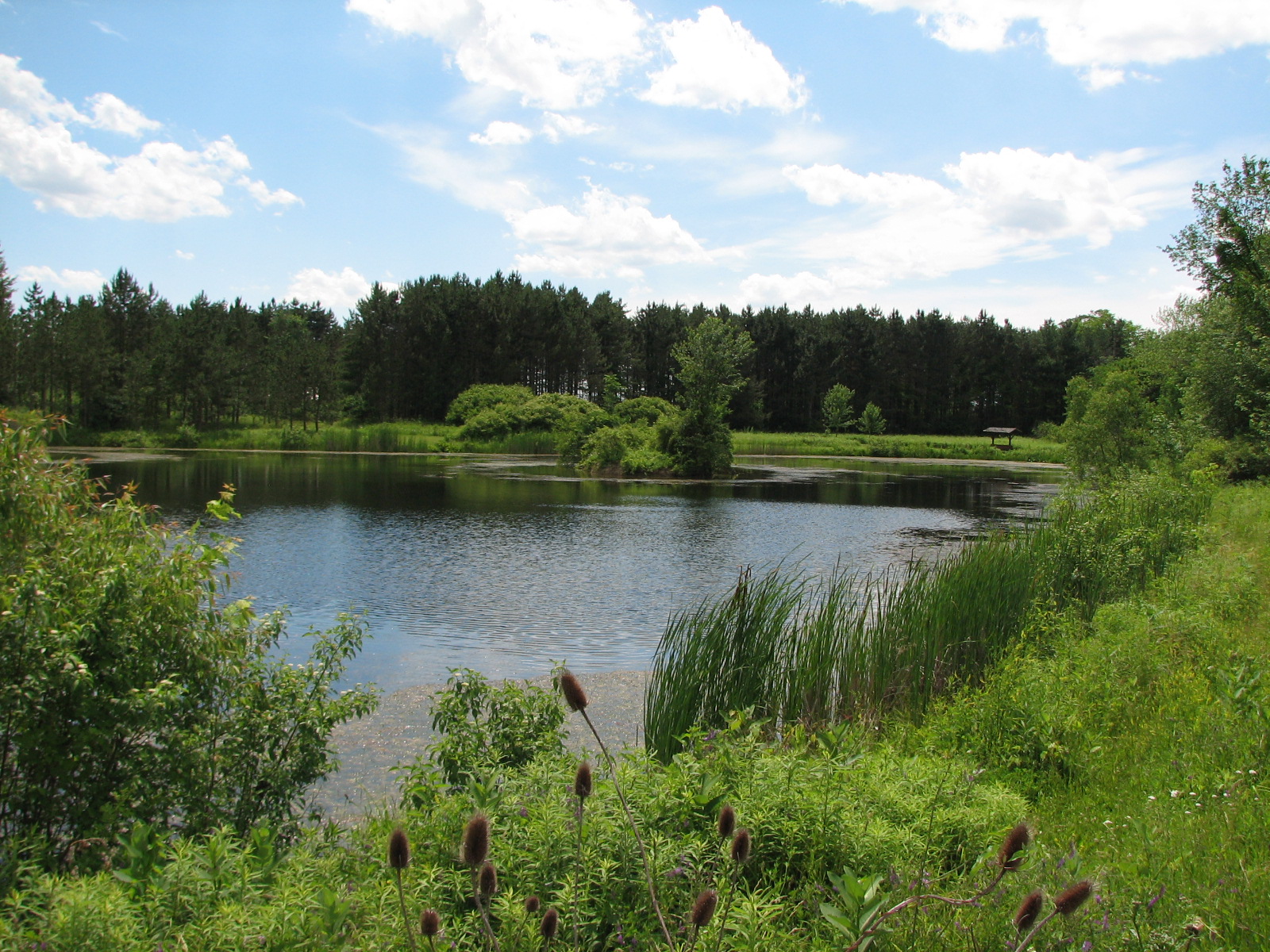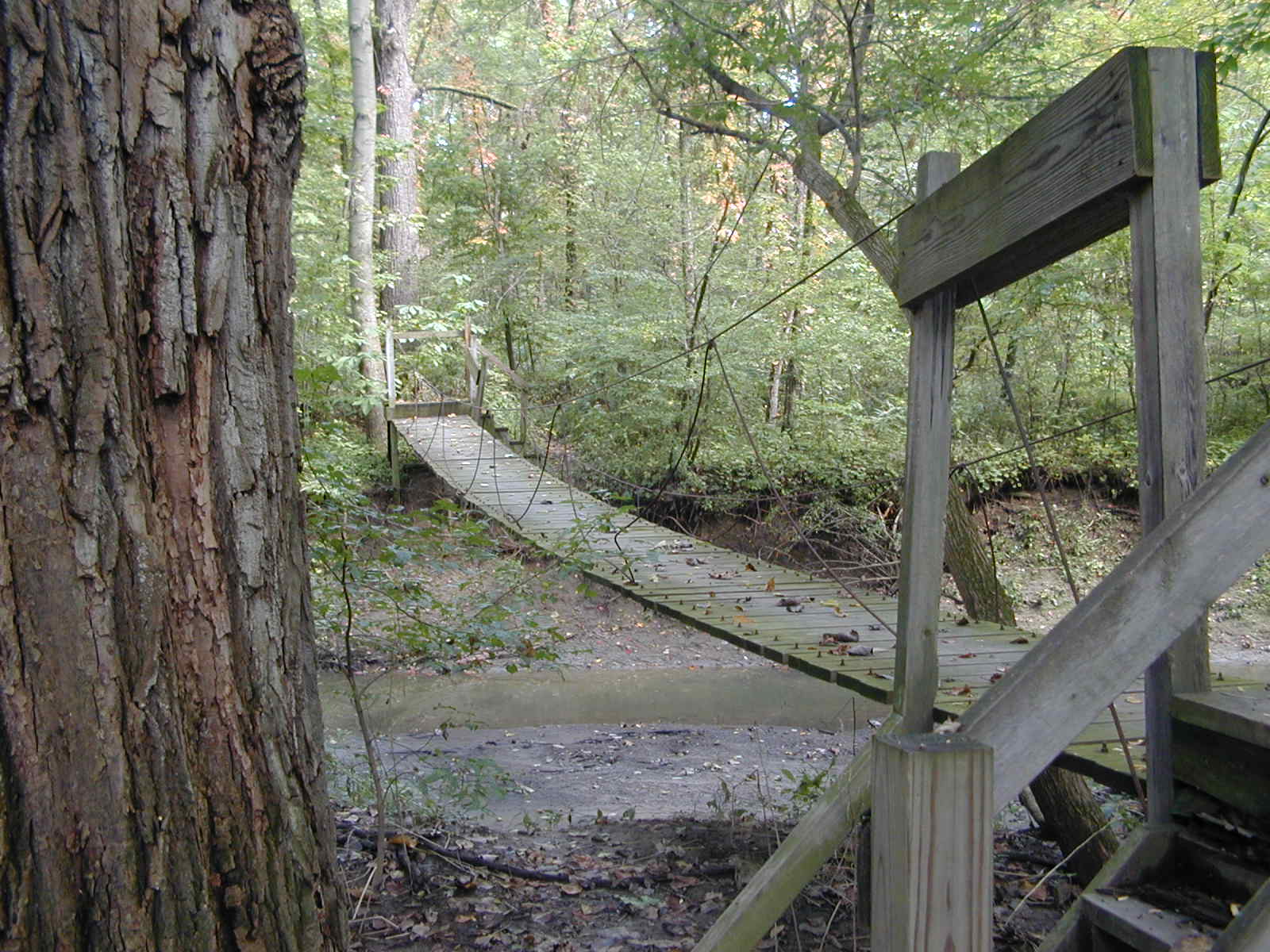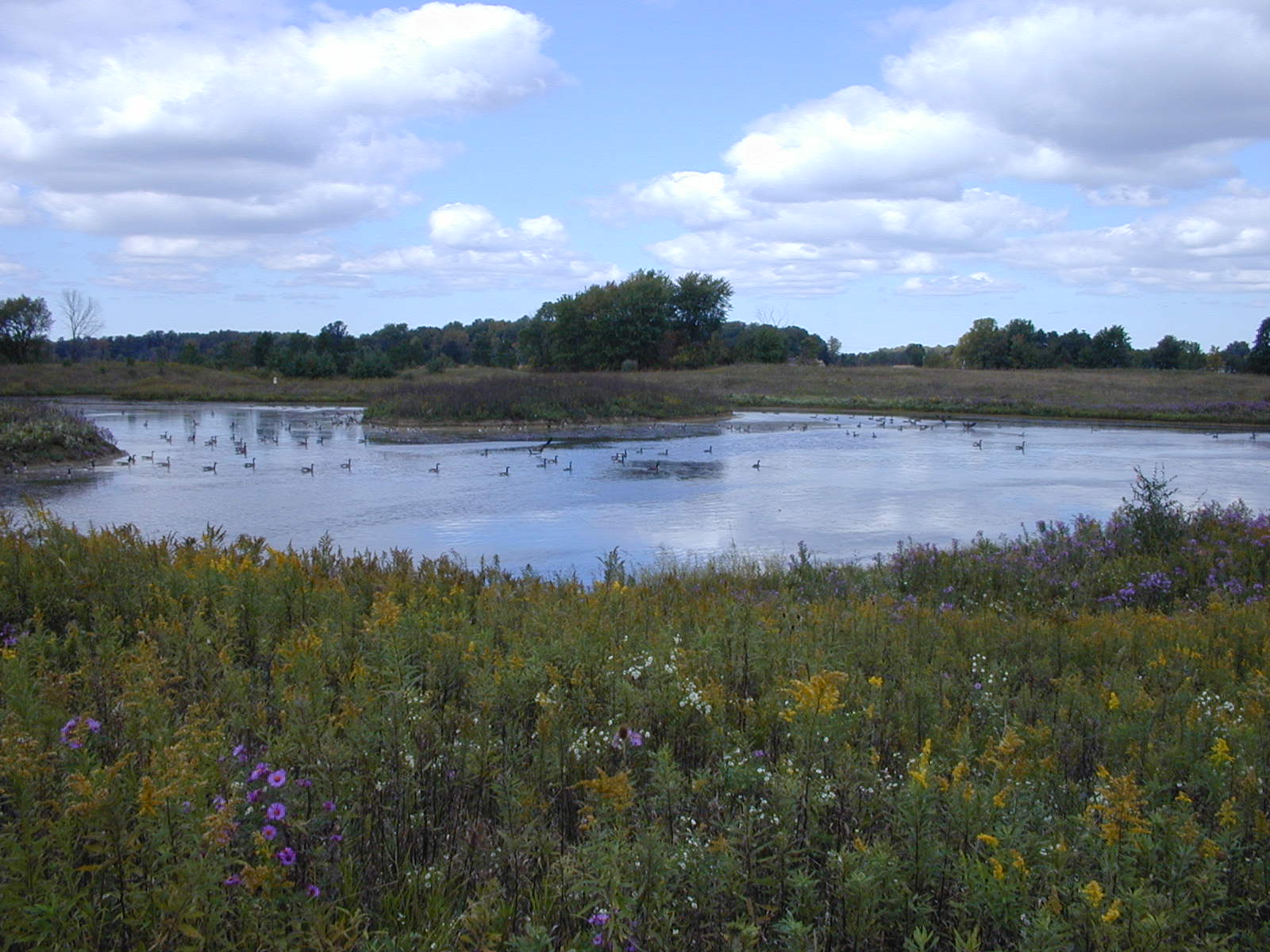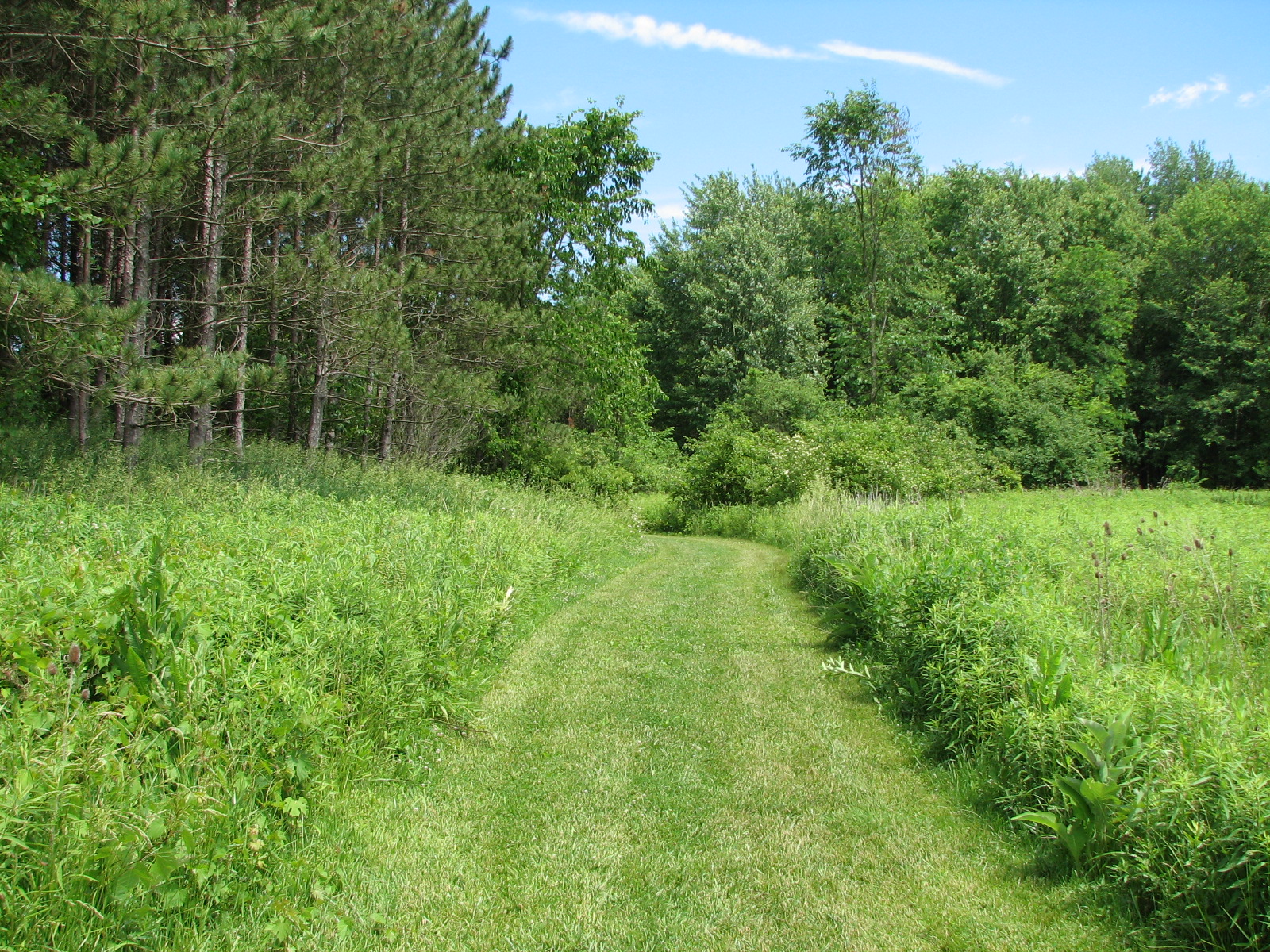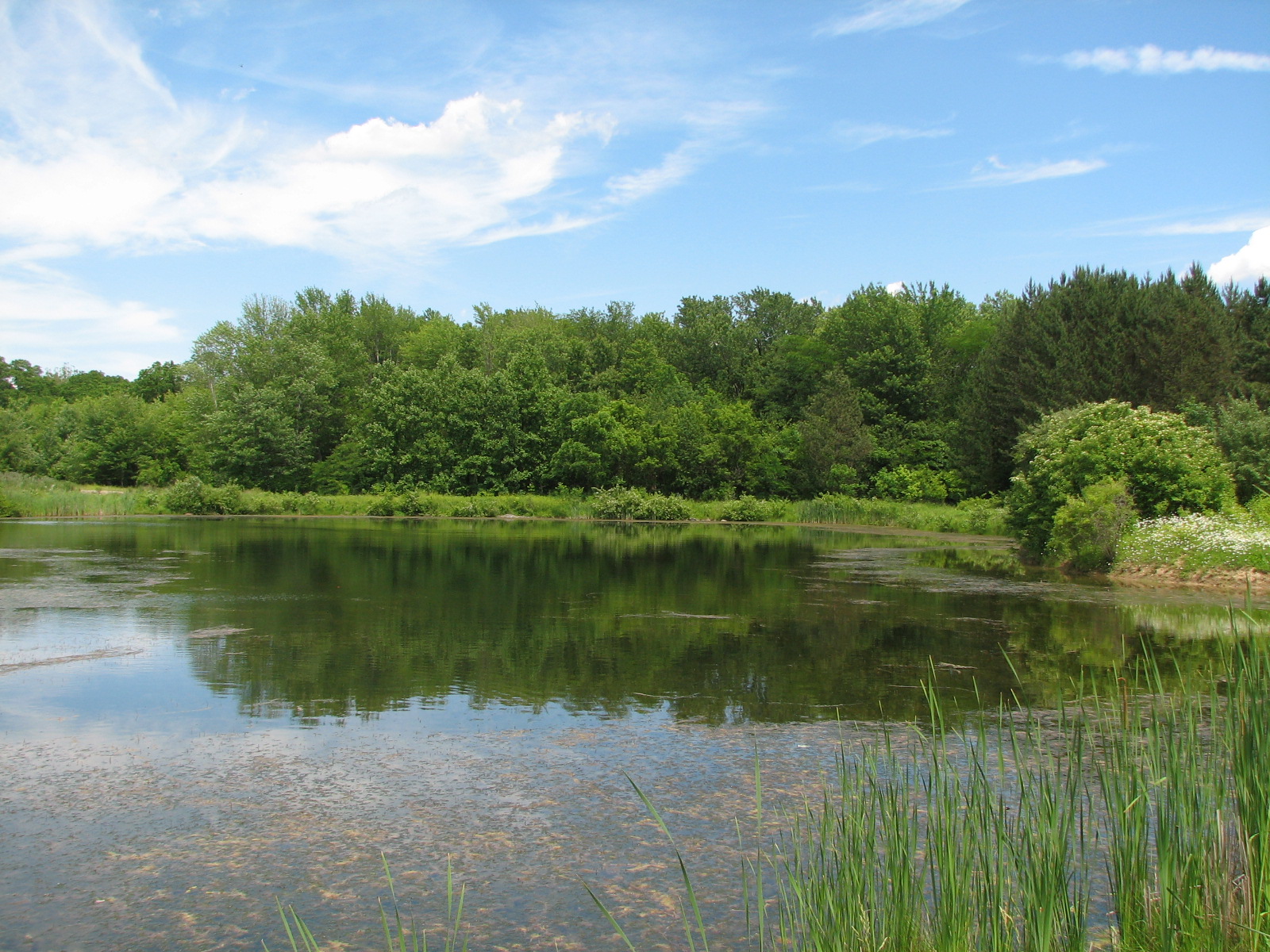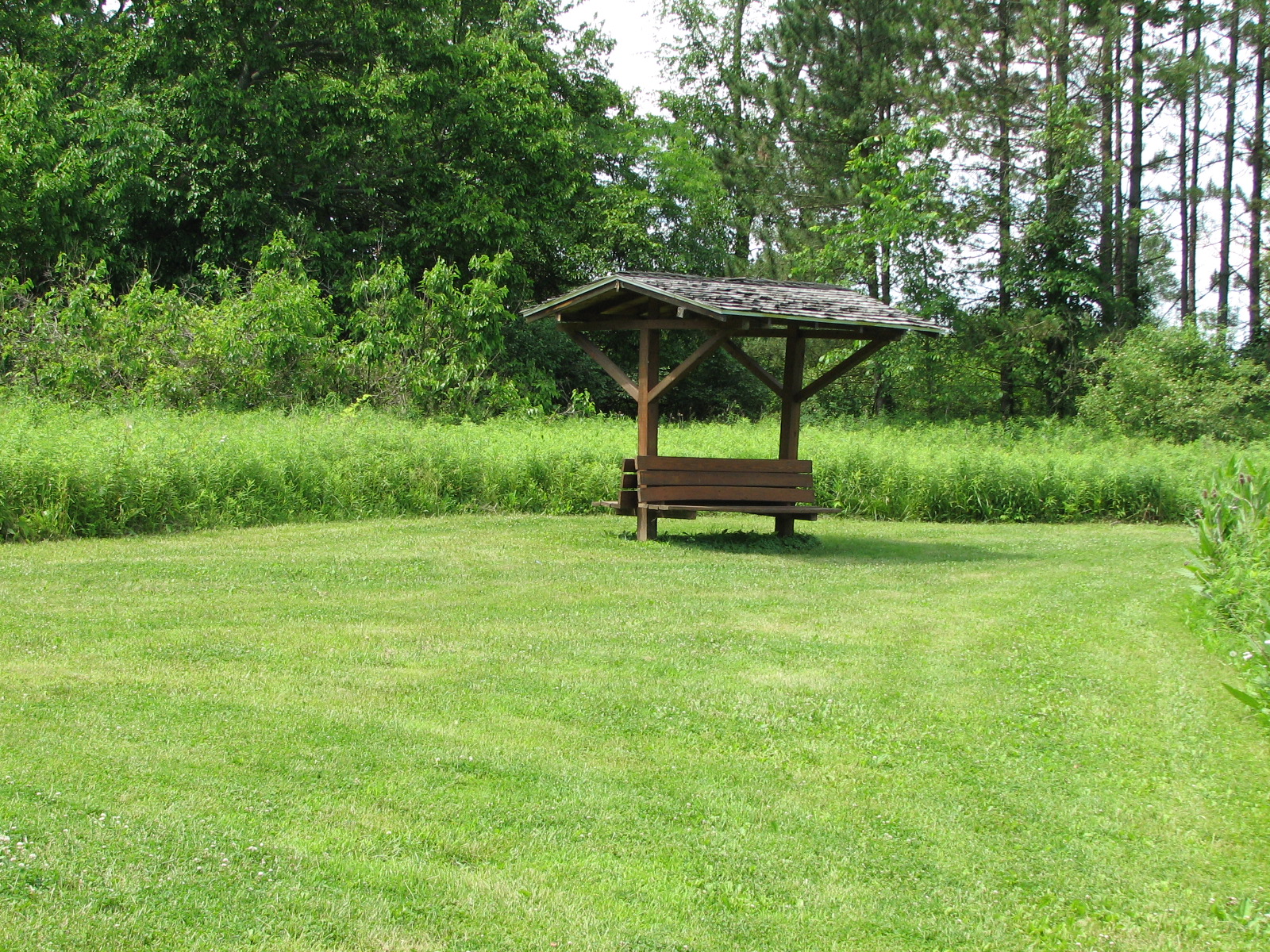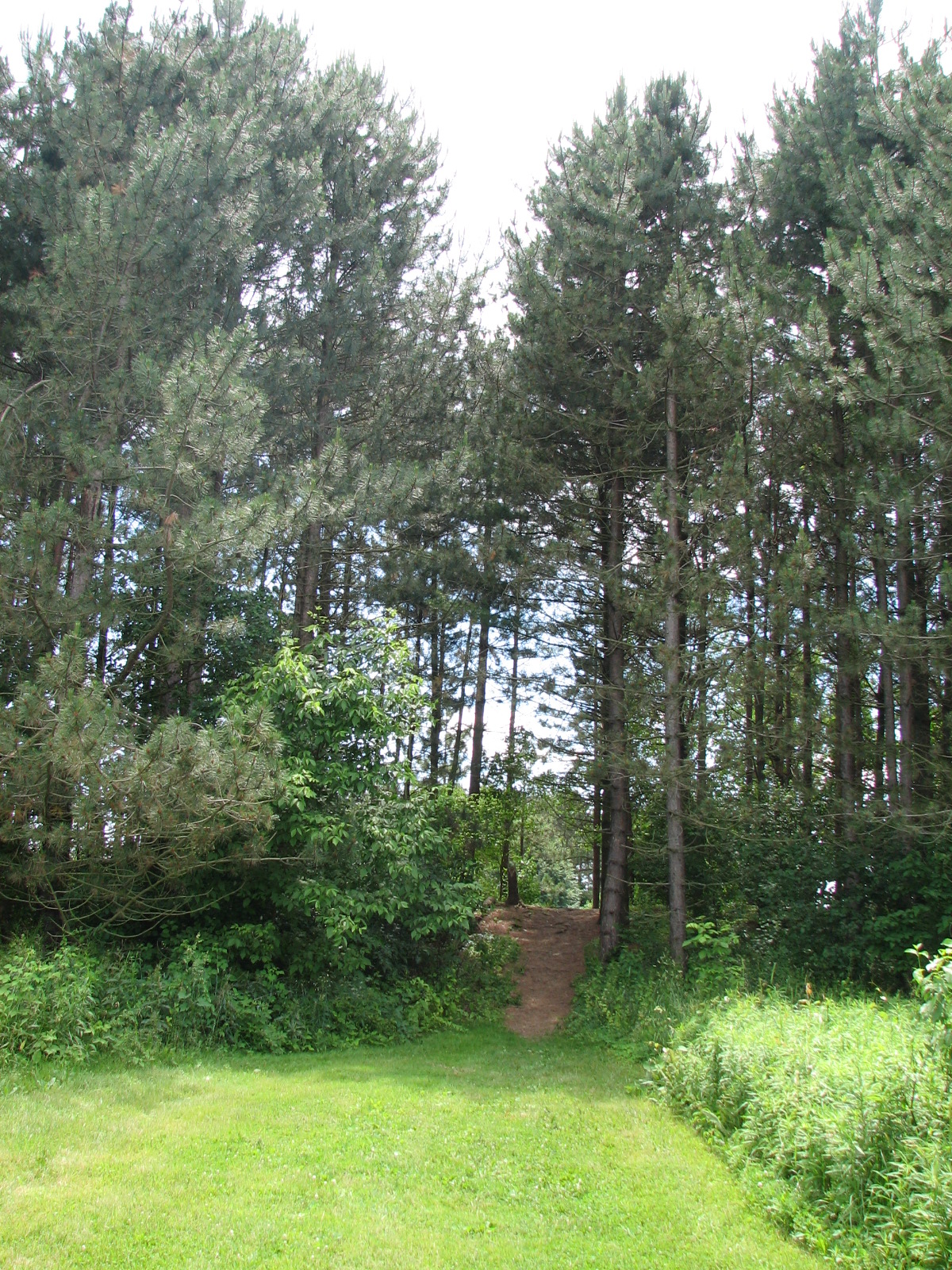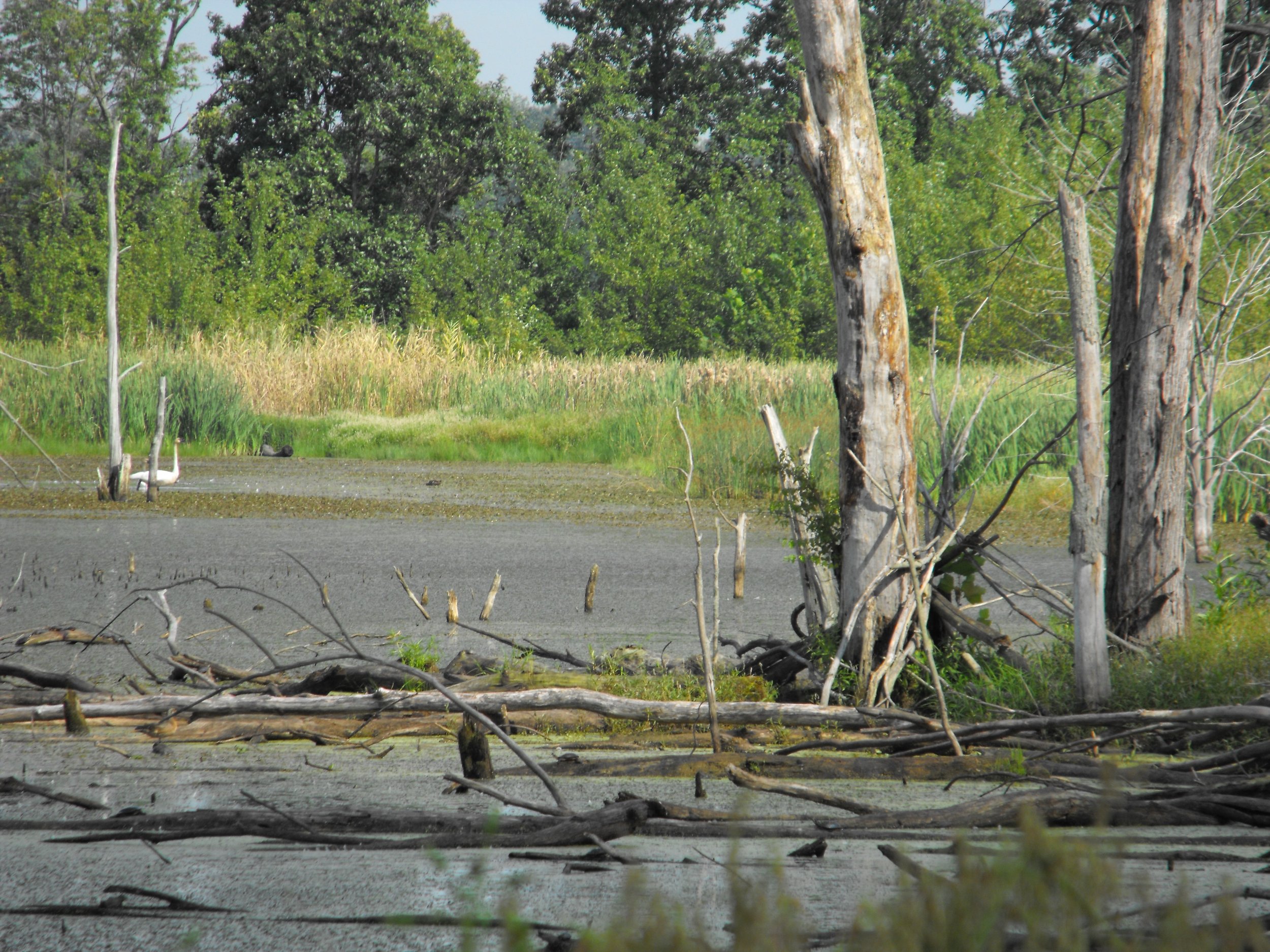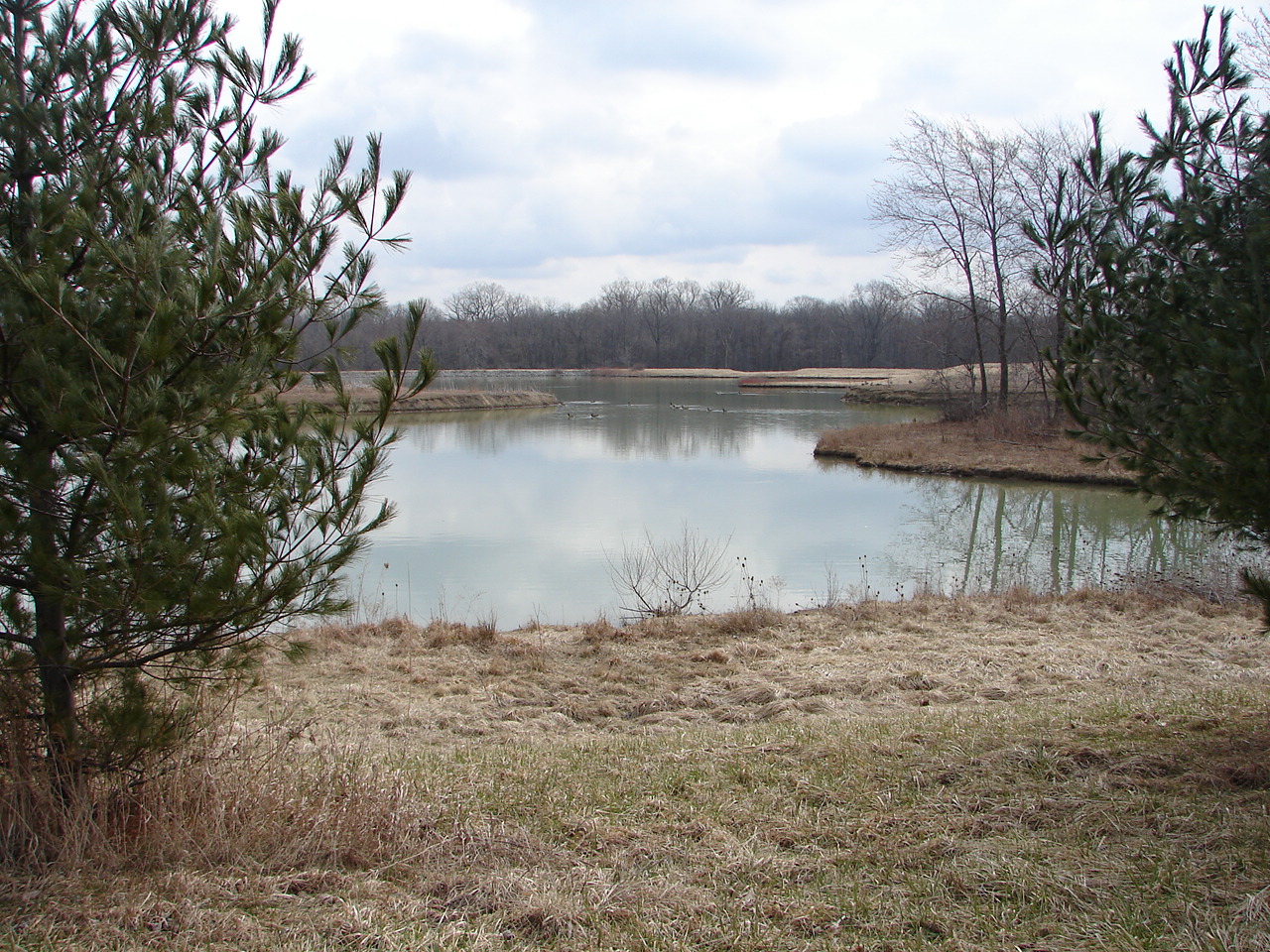Hours: 8 a.m.-Sunset (?), Daily
Caley Reservation is a semi-developed park reserved for wildlife and nature study. Its 529 acres include wetlands, forest, fields and two large ponds. Wellington Creek runs roughly through the middle of the reservation. Two popular activities include wildflower hikes and fishing, but visitors are welcome to simply come and enjoy the quiet and natural beauty of this unique park.
HISTORY
Wetland, Forest, Field and Successional
Caley is first and foremost a natural area and visitors should expect to see a variety of wildlife along its trails. Its diverse natural habitats include forest, field, successional and wetland areas.
Forest: Because Caley Reservation lies in an agricultural area and was once farmland itself, most of the forested habitat at Caley is restricted to the borders of Wellington Creek. Mature stands of cottonwood, box elder, sycamore, walnut, elm, willow, and maple can be found in the bottomlands. Deer are a common sight
Fields & Wetland: Caley supports both extensive field and wetland habitats; each supporting a characteristic assemblage of plants and animals. Nesting birds in Caley’s fields include meadowlark, field and vesper sparrows. Caley’s wetlands and ponds are noteworthy for the diversity of waterfowl that they attract in spring and fall, and for their ability to attract regionally scarce species such as Virginia rail, sora, and Sandhill cranes. A Ross’ goose was once spotted in 2008.
Successional: Successional or Scrub habitats are in transition between field and forest. Young trees from adjacent forested areas and shrubs such as gray dogwood and blackberry occupy these areas in varying densities and are mixed with stands of open grass and forbs. At Caley, in places, we attempt to reset succession through mowing to maintain these sites as habitat for brush–loving wildlife and birds such as Carolina wren, catbird, woodcock, and white-eyed vireo.
HISTORY
From Farmland to Wildlife Preserve
John Caley was born in Sheffield Township in 1880, married Christine Ackerman in 1911, and purchased his farm in Pittsfield Township in 1917. He acquired his parents' adjoining farm after the death of his father, Daniel Caley, in 1923. As early as 1926, John acted upon his keenly felt conservation concerns by leasing portions of his farm to the State of Ohio (through the Ohio Department of Agriculture) in an effort to replenish the region's diminished wildlife populations.
John E. Caley's will, dated 1960, promised 320.89 acres of farm and woodland to the National Wildlife Federation Endowment, Inc. The will stipulated that the land be managed "for the purpose that said Corp. was founded and particularly for the benefit of wildlife in the United States and the study of the habits of wild birds and animals...shall not be sold by the Endowment Fund, nor shall the timber be taken off said farm." Mr. Caley died in 1967 and later that same year his property transferred to the National Wildlife Federation.
The Federation assumed active control of the site in 1969 and initially yielded stewardship responsibilities to the Ohio Department of Natural Resources (Division of Wildlife). A "Long Range Wildlife Management Plan" dated August 1970 (Simmerer) reflects the ODNR's plans for the site.
The National Wildlife Federation then entered into agreement with the Lorain County Metropolitan Park District (LCMPD) to enhance local stewardship opportunities.
Hours
8 a.m.-Sunset, Daily
Contact
(440) 458-5121 (Administrative Office)


